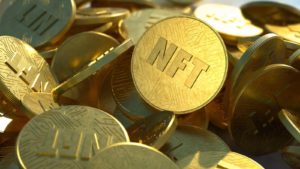
Despite criticism from some investors, NFTs still hold great potential. The key is identifying which NFTs provide value versus those minted solely for profit. The reality is that much like in the case of meme coins, the value of NFTs is subjective and determined mainly by the skill of marketing teams and the size of their respective budgets. Building hype and the feel of FOMO is perhaps the main tactic used to increase the value of most NFTs, which is based on nothing except the user’s perception.
In saying this, some NFTs provide to carve out subjective value for themselves in other ways. For instance, some projects have unique use cases, actual utility, strong communities, or historical or social significance.
Some of the NFTs that still hold potential have been drowned out in the marketing noise of competing projects. Here are forgotten projects to revisit, which could rise in value later.
Autoglyphs

Created by Larva Labs, the same team behind CryptoPunks, Autoglyphs are algorithmically generated art pieces stored directly on the Ethereum (ETH-USD) blockchain. Their scarcity (only 512 exist) and the innovative method of their creation could make them historically significant as the NFT space evolves.
There has also been some historical precedence that these autoglyphs could fetch a higher premium. A Sotheby’s auction in New York saw strong demand for NFTs from the bankrupt crypto hedge fund Three Arrows Capital’s collection, with seven NFTs selling for over $2.4 million. Autoglyph #187 was included in the works.
According to Opensea listings, some of the cheapest Autoglyphs on the secondary market fetch around $500,000 at the time of writing. To put that price into perspective, the wildly popular Bored Ape NFT collection has a floor price of just $50,000, so Autoglyphs are definitely at the top of the market. For traditional art that consists of sketches or minor paintings, you’d expect to pay half a million for a lesser-known work of an Old Master by the likes of Da Vinci or Michelangelo in the High Renaissance era.
Of course, part of the absurd valuations of NFTs comes down to cyclical swings of the broader crypto market that is dominated by the price discovery of Bitcoin (BTC-USD), which is highly correlated with Ethereum.
Decentraland Wearables

Decentraland is a virtual world that’s been around since before the NFT boom, and it allows users to create, experience, and monetize content and applications. Within this ecosystem, wearables for avatars can be NFTs with utility, allowing users to display their digital fashion sense.
These NFTs could be at the precipice of the metaverse as an emergent concept. Therefore, these will probably become more valuable over time, especially from limited editions or early collections.
Part of the appeal of Decentraland NFTs is that although they are inexorably tied to its virtual world, their existence is permanently stored on the Ethereum blockchain. This means that even if Decentraland were to cease to exist as a community, those virtual assets would still be accessible and tradeable between users, which reduces a significant amount of risk of the investment.
EulerBeats Originals

EulerBeats is a collection of algorithmically generated art and music NFTs, which are quite unique because they combine visual art with audio elements. The originals were limited to 27 tokens, making them rare. They also have an interesting feature where token holders can earn royalties on prints (copies) of the original NFTs.
The project features a bonding curve pricing mechanism for buying and burning prints, providing liquidity and influencing prices based on supply. It’s built on the Ethereum blockchain and is part of the broader work of Treum.io, a ConsenSys-backed company that has launched successful projects in the past.
EulerBeats could hold future promise for investors because of the rarity of its NFTs and the fact that it offers investors something different and more interactive than simply an easily copyable JPEG.
On the date of publication, Matthew Farley did not have (either directly or indirectly) any positions in the securities mentioned in this article. The opinions expressed are those of the writer, subject to the InvestorPlace.com Publishing Guidelines







